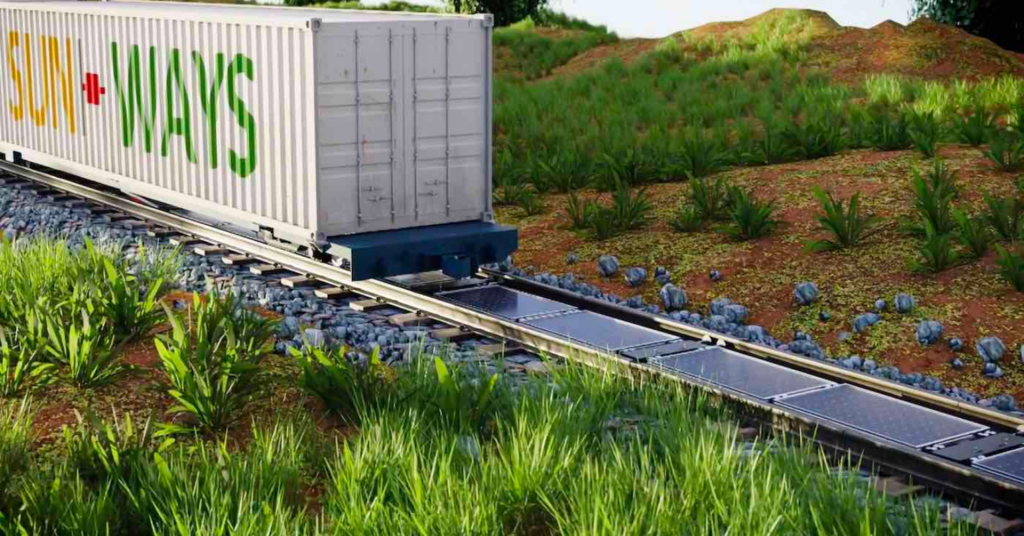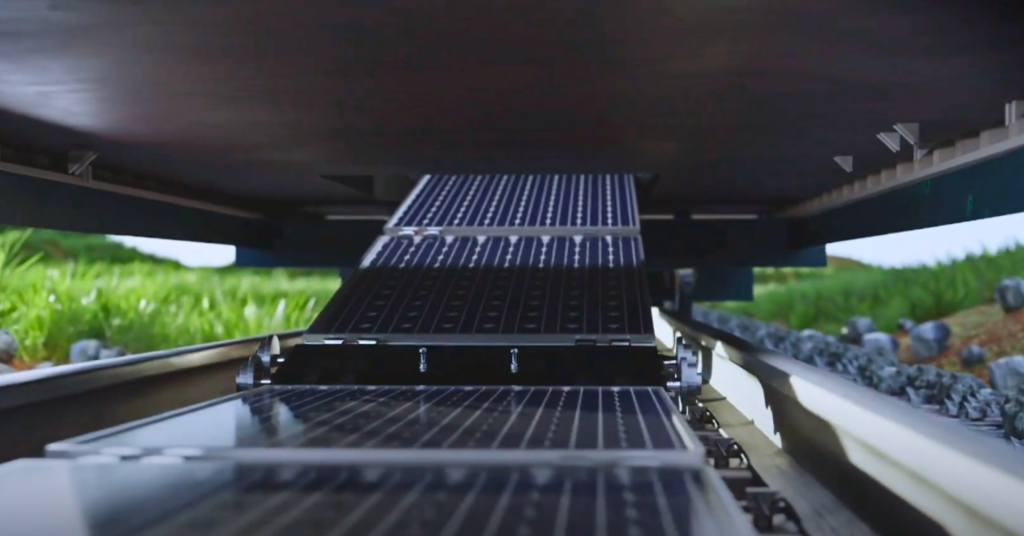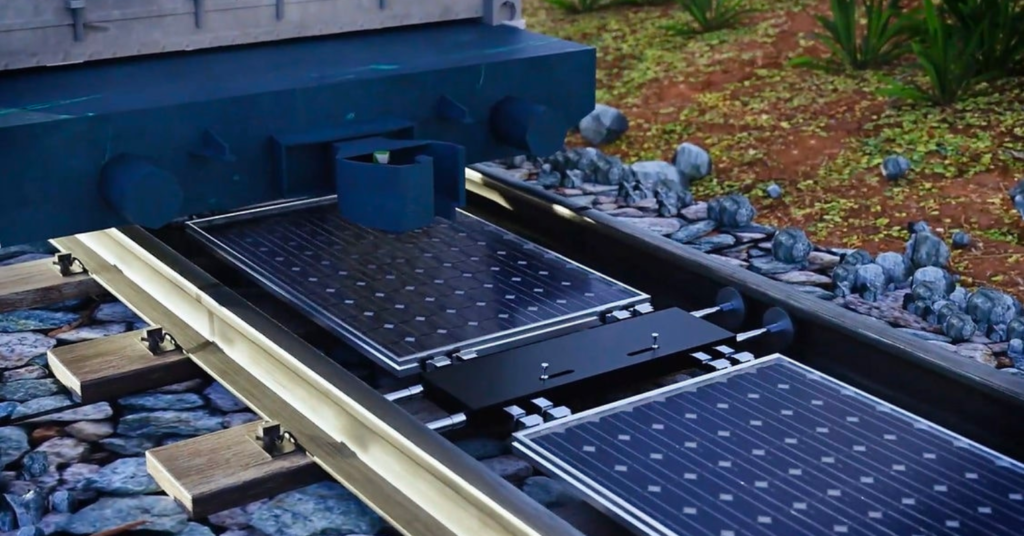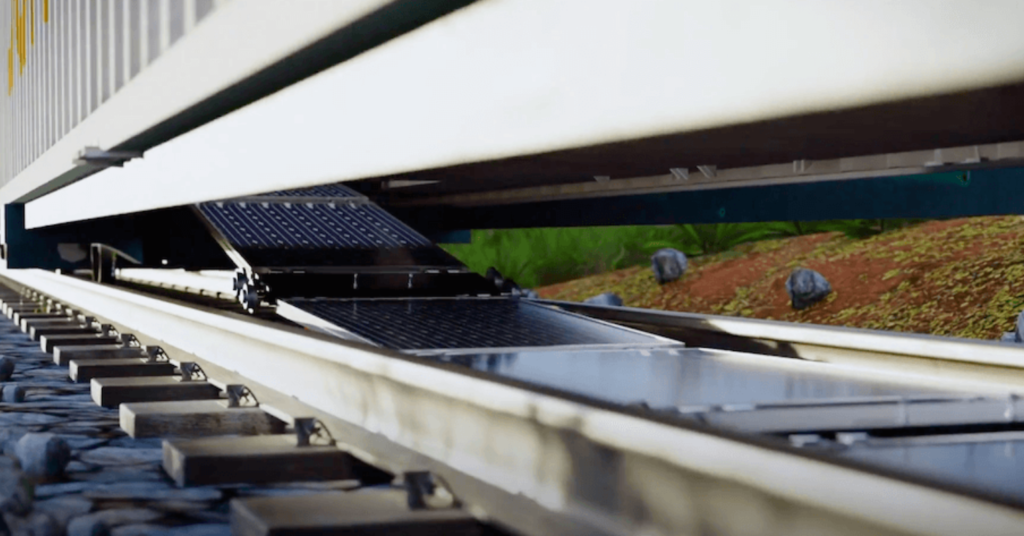This Swiss company is installing solar panels on railway tracks in a unique way.

Swiss start-up Sun-Ways is set to install solar panels on railway tracks, offering a world-first solution that could help accelerate Europe’s energy transition.
The innovative technology is removable, making it possible to clear the tracks for maintenance work.
While other developers have been exploring solar panels on unusual surfaces, such as roadsides, reservoirs, and farms, Sun-Ways is the first to patent a removable system.

The panels will be laid out like a carpet, covering a section of railway tracks near Buttes train station in western Switzerland.
However, the installation is still awaiting approval from the Federal Office of Transport. Once approved, a specially designed train developed by Swiss track maintenance company Scheuchzer will be used to lay out the photovoltaic panels.
The electricity generated by the solar panels will be fed into the power grid and used to power homes. Sun-Ways has estimated that the national rail network could produce up to one Terawatt-hour (TWh) of solar energy per year.
This would be equivalent to around 2% of Switzerland’s total energy consumption.

Sun-Ways’ co-founder Baptiste Danichert sees potential in this innovative solution beyond Switzerland’s borders. The start-up has plans to extend its solar panel solution into neighboring countries, such as Germany, Austria, and Italy.
Danichert believes that 50% of the world’s railways could be equipped with their system.
While the innovation is groundbreaking, the technology is still in its pilot stage.
The International Union of Railways has expressed concerns that the panels could suffer micro-cracks, increase the risk of fires in green areas, and even distract train drivers with reflections.

Sun-Ways has reassured regulators that its panels are more resistant than conventional ones and could have an anti-reflection filter to prevent any reflections.
The company also has built-in sensors to ensure the panels work correctly, while brushes attached to the end of trains can remove dirt from the surface of the panels.
Despite these assurances, some have raised concerns about the impact of ice and snowfall on solar panels. Sun-Ways is working on a solution to melt frozen precipitation, which could resolve this issue.
As the world moves towards a more sustainable future, solutions like these could play a crucial role in reducing carbon emissions and meeting climate targets.